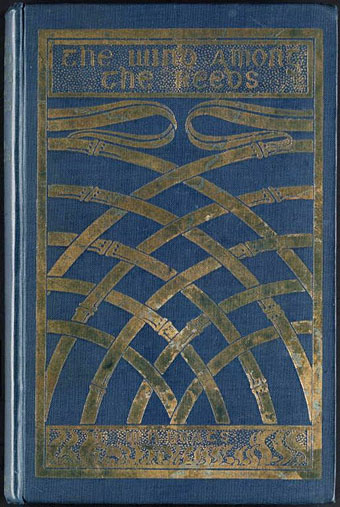
The Wind Among the Reeds (1899). Cover design by Althea Gyles.
1: The Song of Wandering Aengus by WB Yeats.
I went out to the hazel wood,
Because a fire was in my head,
And cut and peeled a hazel wand,
And hooked a berry to a thread;
And when white moths were on the wing,
And moth-like stars were flickering out,
I dropped the berry in a stream
And caught a little silver trout.When I had laid it on the floor
I went to blow the fire a-flame,
But something rustled on the floor,
And someone called me by my name:
It had become a glimmering girl
With apple blossom in her hair
Who called me by my name and ran
And faded through the brightening air.Though I am old with wandering
Through hollow lands and hilly lands,
I will find out where she has gone,
And kiss her lips and take her hands;
And walk among long dappled grass,
And pluck till time and times are done,
The silver apples of the moon,
The golden apples of the sun.
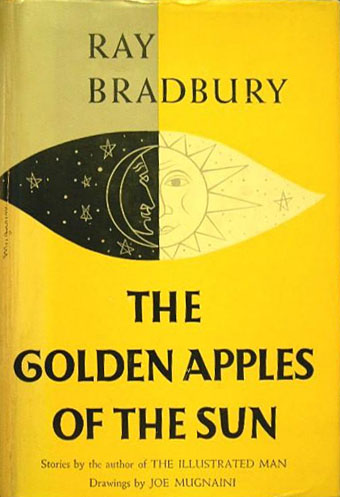
Illustration by Joe Mugnaini.
2: The Golden Apples of the Sun (1953), a story collection by Ray Bradbury.
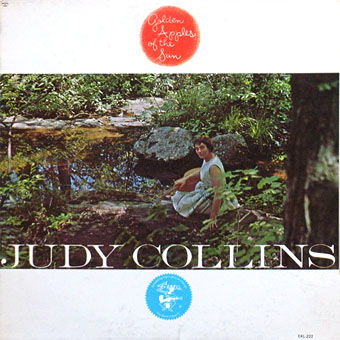
Cover design by William S. Harvey.
3: Golden Apples of the Sun (1962), the debut album by Judy Collins. The first track is her setting of The Song of Wandering Aengus.
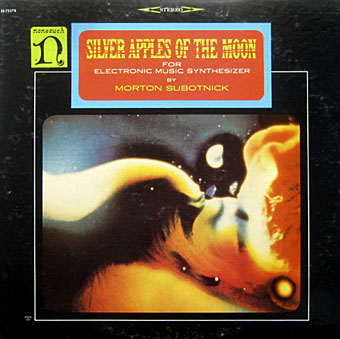
Cover design by William S. Harvey. Artwork by Anthony Martin.
4: The Silver Apples of the Moon (1967), an album of electronic music by Morton Subotnick.
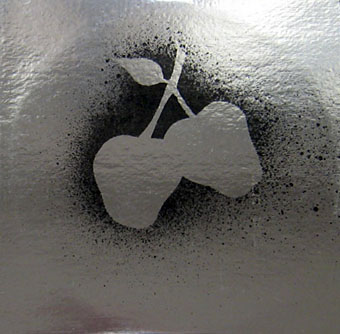
Artwork by Anonymous Arts.
5: Silver Apples (1968), an album of electronic music by Silver Apples.
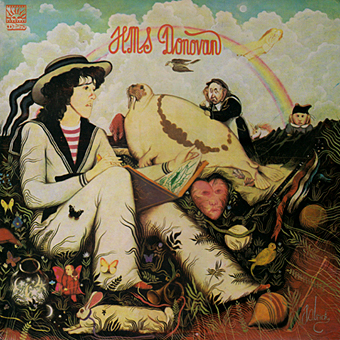
Art Direction by Sid Maurer. Artwork by Patrick.
6: HMS Donovan (1971), a double album of poems for children set to music by Donovan. The second song on side four is The Song of Wandering Aengus.
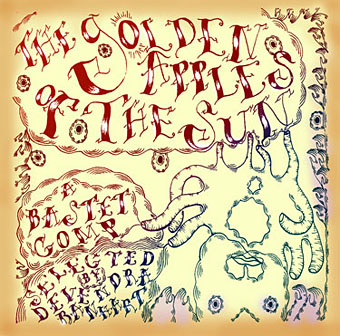
Cover by Devendra Banhart.
7: The Golden Apples of the Sun (2004), a freak folk compilation selected by Devendra Banhart for Arthur magazine‘s Bastet label.
Previously on { feuilleton }
• The Golden Apples of the Sun

http://www.youtube.com/watch?v=W9LV3ciVA4A
Yeah, there’s a lot of other versions. Never liked the Waterboys in their Oirish mode; I can take that from Donovan even though he’s Scots but Mike Scott (also Scots…) always seemed fake for some reason. None of this is authentic, even Yeats, so it’s down to my prejudice I suppose.
Joyce always seems more authentically Oirish than Yeats to me but then again he’s more authentically any and every nationality especially with Finnegans Wake but then again his poems weren’t anywhere near as good as Yeats ones.
James Stephens also seems more authentically Irish too http://en.wikipedia.org/wiki/James_Stephens_(author)
Ha, no Joyce is a terrible poet compared to Yeats.
The authenticity I refer to is less to do with being Irish–Joyce did flee the place, after all–and more to do with the sentiments of the Celtic Revival which are as much a pose in their own way as Donovan and Mike Scott pretending to be Irish tinkers. Yeats was writing a lot of those poems whilst living in London, he wasn’t wandering into the hills and fishing for trout. Joyce was scornful about that kind of posing since it rejected the towns and cities the writers were living and working in.
American singer songwiter Caroline Herring does a beautiful version of Wandering Aengus. Also Jolie Holland performed it on her first album ‘Catalpa’. though I can’t remember what her version sounds like.
Hi Anne. The Caroline Herring is a great version, she makes it sound a lot more natural than Judy Collins. And thanks for pointing me to Jolie Holland’s version, I love her voice. Only heard her Springtime Will Kill You album, however. Her version is here:
http://www.youtube.com/watch?v=DOijf_92ZFs
I’ve said many times that one of the benefits of these posts is when they show you something you weren’t aware of before. Prior to this I only knew the Donovan version, and assumed that subsequent versions were all derived from his. Fascinating to see Yeats’s words becoming a kind of folk standard. He’d no doubt approve.
“Golden Hair” is one of my favorite poems. :( I think it’s also more famous for its musical rendering by Syd Barrett than as Joyce’s poem.
While it’s fictional, I thought maybe it would be worth mentioning that in “Leviathan” by Robert Anton Wilson that Rebecca Goodman’s study of comparative mythology is titled “The Golden Apples of the Sun, the Silver Apples of the Moon.”
Syd’s version of Golden Hair is great, I often think of it as a twin with the Donovan songs since they’re the same idea from the same period. I was being a bit harsh on Joyce but while he’s a giant of narrative fiction he wasn’t in the same league as Yeats when it came to poetry. That works counterwise: Yeats’s prose fiction can’t be compared to Joyce.
I’d forgotten about that detail from Illuminatus! but then it’s years since I’ve read the books. I think that may have been the first place I came across the phrase, I seem to recall being surprised by Bradbury’s book shortly after and wondering what (if any) the connection was.
I don’t care what silly things Yeats needed to do or to believe in order to write his ravishing poems… I am just glad he was willing to look like a fool if needed in order to get to the place where he needed to go to catch them.
As for whether he is “authentic” here, I say: pish! No matter: this is a poem that knows how to sing and swing.
Twice I have heard “The Song of Wandering Aengus” read by Garrison Keillor along with a contemporary poem on his brief poetry show, and neither time could the new stand up to Yeats. I have come to think that it is a real touchstone poem–even though it was an early poem of his, it has power and gorgeous sound, and very few contemporary poems can come into its presence without appearing weak, spiritless, and tin-eared.
P. S. You ought to add Eudora Welty’s collection of stories, “The Golden Apples.”
Hi Marly. I agree, Yeats is one of my favourite poets. The quality of Wandering Aengus is demonstrated by its influence which you only see a small part of here. Few writers of any stripe manage to mint a phrase that resonates in this way, and Yeats managed that several times, not least in The Second Coming.
I confess I didn’t know about the Eudora Welty but then this was only a brief sketch. As the proliferation of songs shows, once you start searching the connections sprout everywhere.
I am rabid on Yeats. Have you read Kathleen Raine? She is a definite follower…
I only know Kathleen Raine’s writing about others such as Blake. Might have read her on Yeats as well. My poetry reading has never ventured gone very deep, I’m afraid. Keep intending to remedy that.
Tom Disch has a nice little introductory essay on her in “The Castle of Indolence.”
Re:Art Direction by Sid Maurer. Artwork by Patrick.
Did you know that ‘Patrick’ is the alter-ego of John Byrne, Scottish painter and author of Tutti Frutti and The Slab Boys?
Clive: Very familiar with John Byrne but I didn’t know that! Thanks.